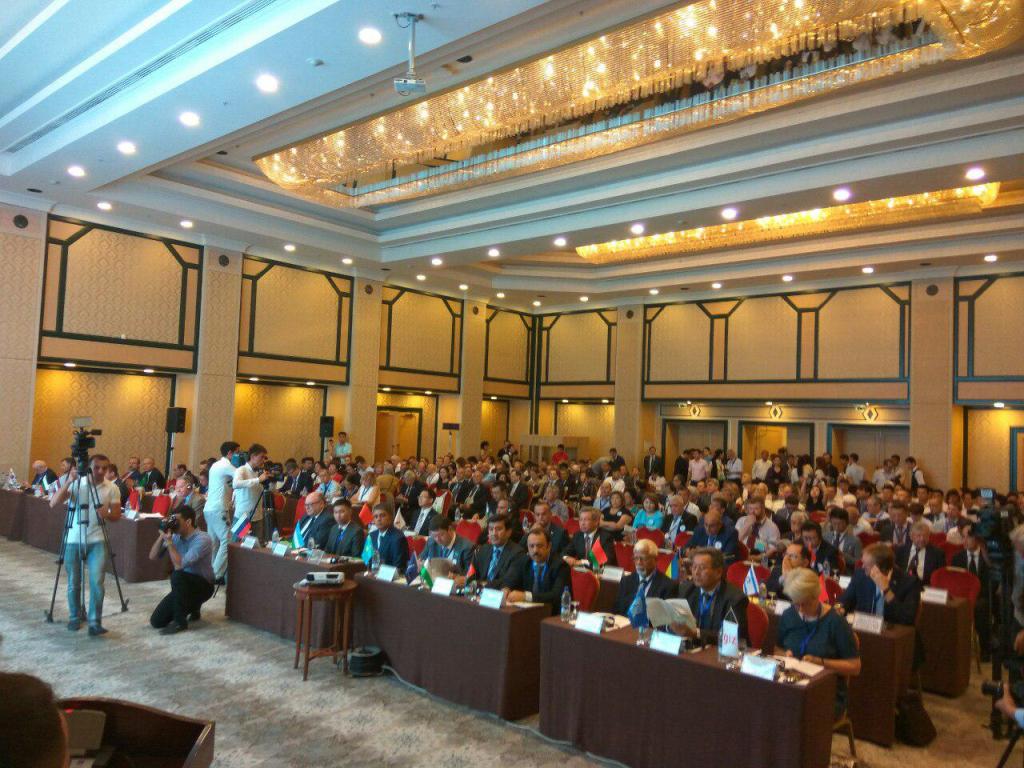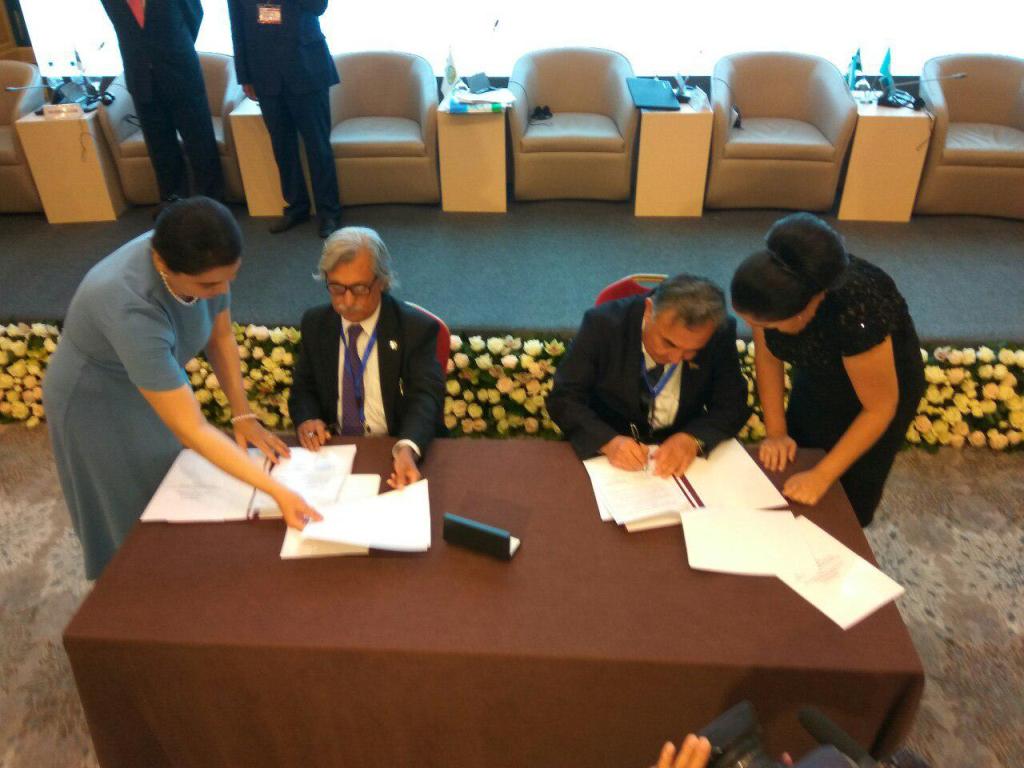

TASHKENT. On June 7-8 within the Central Asian International Environmental Forum, an international conference was held on the theme: "Joint actions to mitigate the consequences of the Aral catastrophe: new approaches, innovative solutions, investments."
The conference was organized by the Ecological Movement of Uzbekistan and the Ministry of Foreign Affairs in partnership with the relevant ministries and departments of the republic, IFAS, CAREC, UNDP, UNESCO, the European Union, World Bank, GIZ, OSCE, the Standing Committee on Cooperation in Science and Technology of the Organization of Islamic Cooperation ), the Global Water Partnership, etc.
The event was attended by leading experts from more than 20 countries, parliamentarians, heads of ministries, departments of Central Asian countries and the Caucasus, representatives of state bodies of the country. The conference was also attended by foreign companies interested in investing in projects to improve the environmental situation in the Aral Sea region, as well as foreign and national NGOs and businesses.
On June 7, the participants of the conference made a trip to the zone of the Aral Sea, to the city of Nukus and Muynak. In this region there is the famous "Cemetery of Ships", here the participants got acquainted with the ecological situation, met with local residents and representatives of state bodies and public organizations.
On June 8, the participants of the event took part in the opening ceremony of the CAREC-TIIAME Innovations and Scientific Research Cluster, the plenary and sectional sessions of the conference. During the sessions, the activities of IFAS and the new Aral Sea Basin Program (ASBP-4), the issues of enhancing the cooperation of the countries of the region in the joint use of the water resources of the transboundary rivers of Central Asia, economic and social development of the Aral Sea zone were discussed. The parties also considered the creation of the Multi-Partner Trust Fund for Human Security for the Aral region under the auspices of the United Nations, the creation and development of protected natural areas in the Aral Sea region, the activation of forest reclamation works on the drained day of the Aral Sea, and the involvement of young specialists in developing new approaches and innovative solutions to the environmental problems of the Aral Sea and use of water resources in the region.

The conference assessed the socio-economic and environmental situation in the Aral Sea region. It was noted that over the past half-century in the Aral Sea, which was recently considered the fourth largest lake in the world, the volume of water decreased by more than 15 times, the water level decreased by 29 m, the coastline retreated by hundreds of kilometres, the salinity reached 150-300 g / l. On the dried-up bottom of the sea, vast areas of white salt fields appeared, which turned into a new Aralcum desert with an area of 5.5 million hectares, from which dust and salt storms raging more than 90 days a year carry up to 100 million tons of dust from the dried bottom of the sea, which is spread over a distance of more than 400 kilometers.
The consequence of catastrophic changes in the environment was the disappearance of almost 90% of Riparian forest along with its inhabitants, over half of the gene pool of the plant and animal world.
Due to the negative impact of these environmental factors, a number of diseases have been observed in the region: respiratory diseases, urolithiasis, oncological diseases.
Due to the shrinking glaciers that feed the rivers of the Aral Sea basin, and the increase in water consumption for industrial, agricultural and domestic needs as a result of population growth and economic development in the region, the water deficit in the region is expected to increase.
The participants of the conference noted the efforts made by Uzbekistan to mitigate the negative consequences of the Aral Sea crisis, the work within the IFAS programs of ASBP-1, ASBP-2, ASBP-3, the implementation of the State Program for the development of the Aral Sea region for 2017-2021: The Ministry of Finance, tax benefits and social benefits to vulnerable groups of the population, preferential tariffs for rail and air transport for residents of Karakalpakstan and the Khorezm region and other measures.
The conference approved a package of project proposals, for the implementation of which there is a need to attract the investments of 1 billion US Dollars. These include projects on sustainable water resources management, strengthening of technical capacities of water management organizations, development of sustainable agriculture, expansion of forest plantations on the drained seabed, consolidation of mobile sands, development of a network of protected natural areas, establishment of a human security fund for the Aral Sea region and etc.
The participants of the international conference made recommendations to governments, government agencies, business entities, public organizations, scientific and educational institutions of Central Asian countries. Such as IFAS, international financial institutions and international organizations. Recommendations were focused on revitalizing the development of ASBP-4 and strengthening the search for innovative approaches to the implementation of projects and programs in the zone of the Aral Sea area. Also on the use of modern energy, resource and water saving technologies in the industry, agrarian sector and use the municipal and domestic sphere.
An important result of the conference was the signing of a Memorandum of Cooperation between the UNDP Country Office in Uzbekistan and the State Forestry Committee on the coordination of forest plantations on the drained day of the Aral Sea, as well as the Memorandum of Cooperation between the Environmental Movement of Uzbekistan and the Organization of Islamic Cooperation COMSTEC in the field of environmental protection.
Within the framework of the international conference, a specialized exhibition was held. The participants of the conference were able to see the scientific developments, the results of experimental and scientific-practical works in the fields of agriculture, water and forestry, new technologies of water saving and increasing the fertility of lands and etc.
The final document adopted at the conference - the "Tashkent resolution", as well as a collection of conference materials - were sent to the parliaments and governments of Central Asia and foreign countries, international and public organizations.

